Testing the alternator on your car is a crucial part of regular maintenance. If your car’s battery is constantly dying, the alternator may be to blame. In this article, tool experts will show you how to test the alternator using a screwdriver. Anyone can do this simple and easy process!
The Alternator Definition
The alternator converts the car’s mechanical energy into electricity. It uses this electrical energy to operate various electrical components such as lights, conditioning equipment, and so forth [1].
When someone describes a “charging-system problem”, they are usually talking about the alternator. The life of your car’s battery is improved if the alternator operates properly. If it overcharges or undercharges, the lifespan of the battery will be shortened.
The alternator is a key part of the electrical system in your car and it’s important to know how to test it.
What is The Alternator Field Current?
The alternator pulley spins as the engine turns, causing the alternator rotor to spin. The rotor is made up of a wire coil encircled by an iron core.
Because current goes through this wire coil, it is known as “field current”. The larger the field current, the stronger the magnetic field.
As a result, we’ll look for a magnetic field and see whether it’s strong enough. If there is a magnetic field, this implies that there is a strong enough field current, which means the alternator should be functioning properly [2].
The entire system, as seen earlier, is an induction motor. The relationship between the various components is that the greater the field current reaching the alternator rotor, the more powerful the resultant magnetic field, and therefore the higher DC voltage produced by the alternator that may be used to charge the battery.
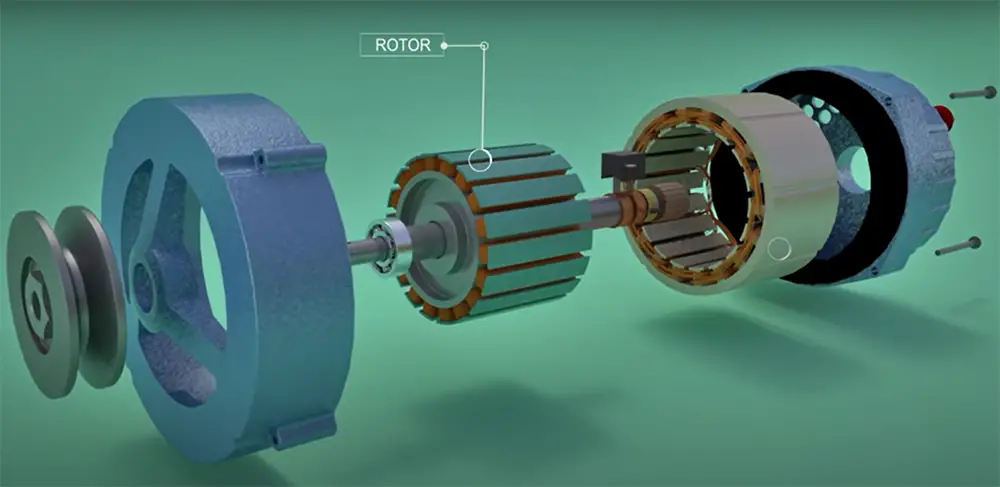
The voltage regulator is linked to the battery and ensures that the battery receives only the correct amount of volts. Voltage levels that are too high or too low might damage the battery as well as other electrical components. The voltage regulator gets input from the battery and adjusts the output of field current allowed through the regulator to the rotor based on this information.
The regulator allows for a greater proportion of the field current to reach the rotor when the battery voltage drops, resulting in a stronger magnetic field. This implies that the alternator now generates more voltage. Conversely, if the battery voltage rises, less field current reaches the rotor, reducing its strength and eventually lowering the alternator’s voltage output.
How Can You Diagnose a Bad Alternator:
1) Dim lights
A faulty alternator may provide uneven voltage to the car’s electronics. As a result, you’ll notice dim or flickering lights [3].
2) Dead battery
If your car won’t start, it might be due to a dead battery caused by the alternator not charging it properly. A screwdriver can help you test an alternator.
The voltage regulator is responsible for controlling the amount of voltage sent to the alternator. A bad voltage regulator will cause the alternator to send too much or too little voltage to the battery, which will either overcharge or undercharge it.
3) Malfunctioned parts of the car
Other electrical components such as the radio, clock, and power windows may stop working. This is because the battery can’t provide enough energy to them when it’s not being charged by an alternator that works properly.
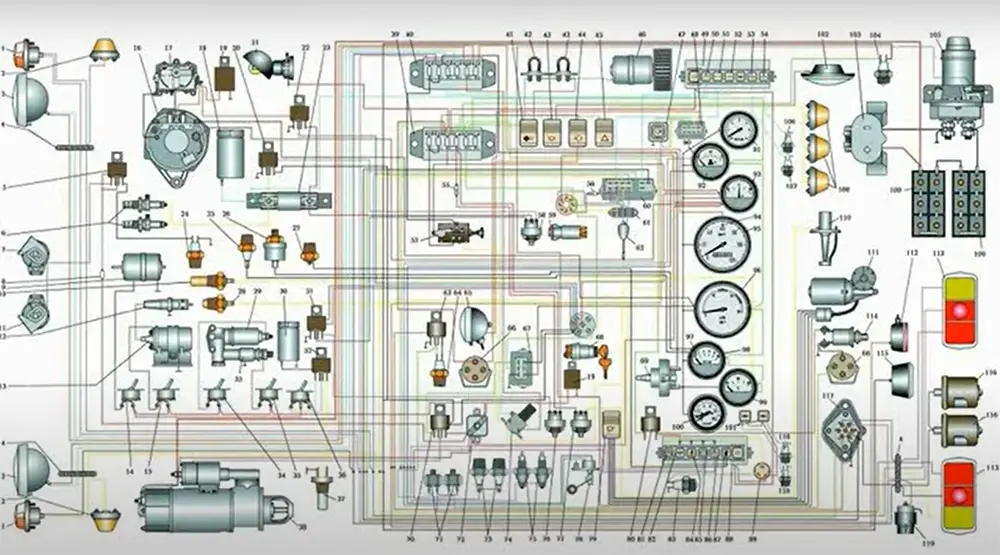
4) Trouble in starting or moving the car
If the alternator is not working, then it can’t send any power to your car’s engine. The vehicle won’t start and you will experience a stalling problem when driving at a low speed.
You’ll also notice that it takes longer for your headlights or radio to turn on than normal. This indicates an issue with the charging system of your car.
5) Warning light
If you see the battery or alternator warning light on your dashboard, it means that there’s a problem with one of those components. Take your car to a mechanic as soon as possible for a diagnosis.
6) Buzzing sounds
Sounds emanating from the engine’s undercarriage indicate a faulty alternator. Such noises are generally caused by the rotor shaft bearings becoming misaligned. Furthermore, poor alignment of the alternator’s pulleys is another major factor associated with noises coming from the alternator.
How to Test Alternator with Screwdriver: Steps
1. Get into Your Car
Remove your safety belt and sit down in the driver’s seat. Insert the car key into the ignition switch, but don’t start the vehicle yet. Keep the key inside and open the hood of your automobile.
2. Secure the Car Hood
Lift the hood of your car and secure it in place by placing the prop rod under the front bumper.
If you have a newer model car, you may not have a prop rod. In that case, use the lever located near the windshield on the driver’s side to open and close the hood.
Some cars also have a secondary latch system that must be released before the hood can be opened. Consult your owner’s manual if you are unsure how to open the hood of your specific vehicle.
3. Find Out the Alternator
Once the hood is open, locate the alternator near or at the top of the engine. The alternator will be secured to brackets by two or three bolts. Loosen these bolts with a socket wrench, but do not remove them [4].
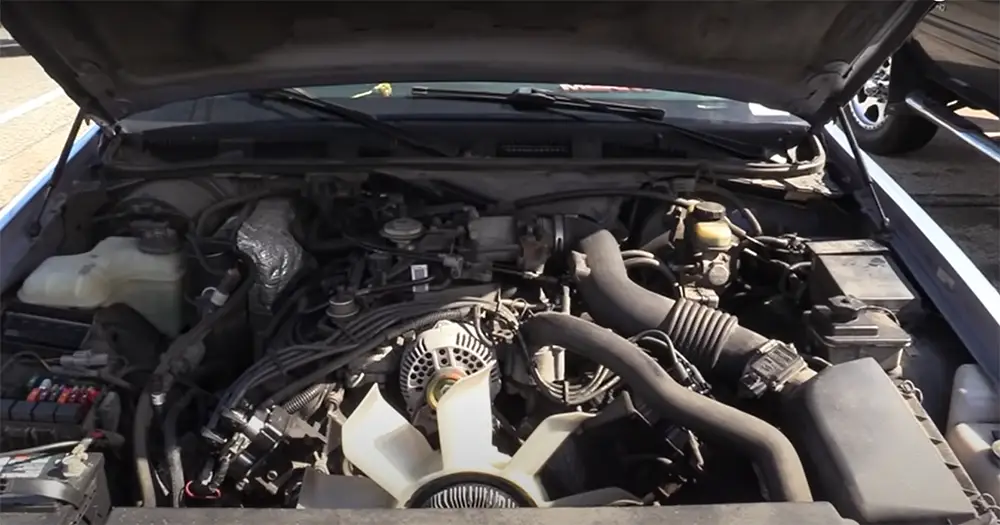
4. Turn the Key to the On Position
This will allow you to rotate the alternator slightly, which will give you room to place a screwdriver between the body of the car and one of the pulleys that drive your engine.
Turn on your vehicle’s ignition switch but do not start its engine yet. Place two fingers over the top of each other above your wrist, then feel for an artery by pressing down on this area gently with those fingertips until there is a faint pulse under them.
How To Know If Your Alternator Is Malfunctioning?
If your alternator is not working or malfunctioning, a battery-shaped light will appear in your dashboard and will not go off. The light usually turns on when you start your car and then goes out, but if this battery symbol does not go out and continues to glow, there may be an issue with your alternator.
The second method for determining if your car’s headlights and dashboard lights are on is to check the brightness of the dash lights and headlights while they are turned off. If the dash lights and headlights grow brighter when you start your engine but remain dim when you’re driving. This could indicate not just that your alternator is broken, but also that there is a problem with your battery.
Additionally, if you hear any electrical noise or buzz coming from your alternator, it’s an indication that your unit is broken.
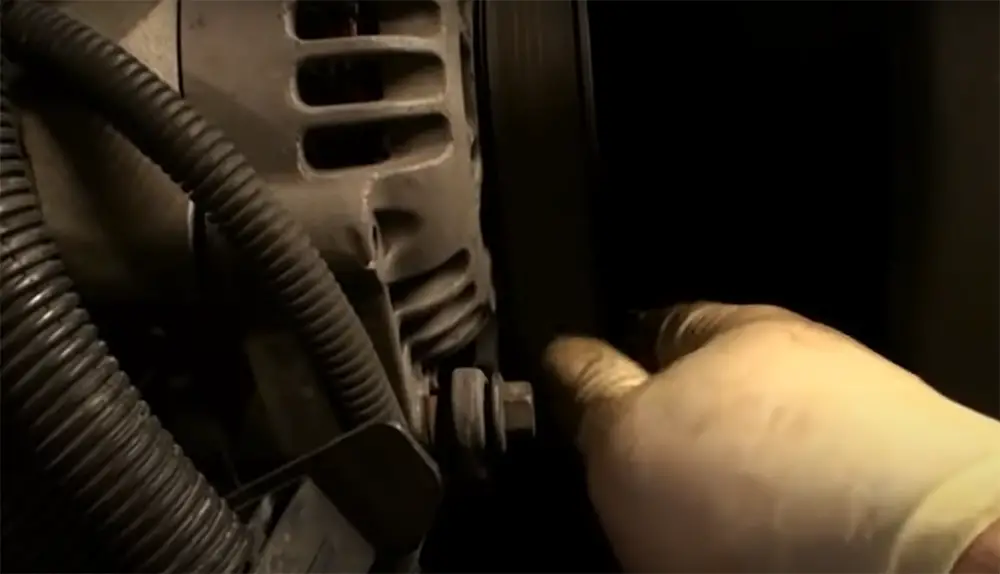
Will a Car Run With a Bad Alternator?
It is possible for a car to run with a bad alternator, but it’s not recommended. Your battery will eventually die if you continue to drive your car with a malfunctioning alternator.
Symptoms of an alternator that is going out include the battery light glowing constantly on the dashboard, dim headlights when the engine is running, and electrical noises or buzzes coming from the alternator.
If you are experiencing any of these symptoms, have your car checked by a mechanic as soon as possible.
If your alternator fails completely while you’re driving, your car will stall and you will not be able to restart it without a jump start. In this case, you’ll need to call for help or find another way home.
A screwdriver is inserted between a belt and pulley to test the alternator. If you hear any electrical noise or buzz coming from your alternator, it’s an indication that your unit is broken.
If your alternator fails completely while you’re driving, your car will stall and you will not be able to restart it without a jump start. In this case, you’ll need to call for help or find another way home.
FAQ
1. What is the easiest way to test an alternator?
The easiest way to test an alternator is to use a screwdriver. To do this, remove the alternator’s belt and then touch the screwdriver’s blade across each of the alternator’s terminals [5].
If the screwdriver lights up or makes a buzzing noise, then the alternator is functioning correctly. If it does not light up or make a noise, then the alternator needs to be replaced.
2. Can you test an alternator without the car running?
Don’t tempt fate by attempting to test an alternator by disconnecting the negative battery cable [6]. A good alternator may well keep the engine running without the use of a negative cable, but it was never a good test. You could remove it in the days before computers, and there were no problems.
3. How do you check an alternator with a multimeter?
Another way to test an alternator is with a multimeter. Set the meter to measure volts, and connect the black lead to the negative battery terminal and the red lead to the positive terminal on the alternator.
If you get a reading of 12 volts or more, then the alternator is good. If not, it needs to be replaced.
If your car has an electronic ignition system, you can also check for spark at each spark plug wire while cranking the engine. If there’s no spark, that usually indicates a bad alternator.
4. How do I test my alternator with jumper cables?
A simple test can be performed with a set of jumper cables and a multimeter.
The two leads of the multimeter will be connected to each battery terminal, typically marked “+” and “-“, as well as to the terminals on the alternator itself.
The car’s engine is turned off, but all accessories are left running; this includes lights, radio, wipers, or anything that normally runs when the car is on. A reading above 13 volts indicates an alternator in good working order; below 12 volts would suggest it needs replacement.
Useful Video: HOW TO TEST A BAD ALTERNATOR WITH A SCREW DRIVER AND VOLTAGE METER. (((SAVE MONEY))) AND DIY
References:
- https://carfromjapan.com/article/car-maintenance/how-to-test-alternator-with-screwdriver-at-home
- https://carfromjapan.com/article/car-maintenance/how-to-test-alternator-with-screwdriver-at-home
- https://carlawn.com/test-alternator-with-screwdriver
- https://toolsjudge.com/how-to-test-alternator-with-screwdriver
- https://www.carhop.com/how-to-test-a-car-alternator
- https://www.familyhandyman.com/project/how-to-test-an-alternator/






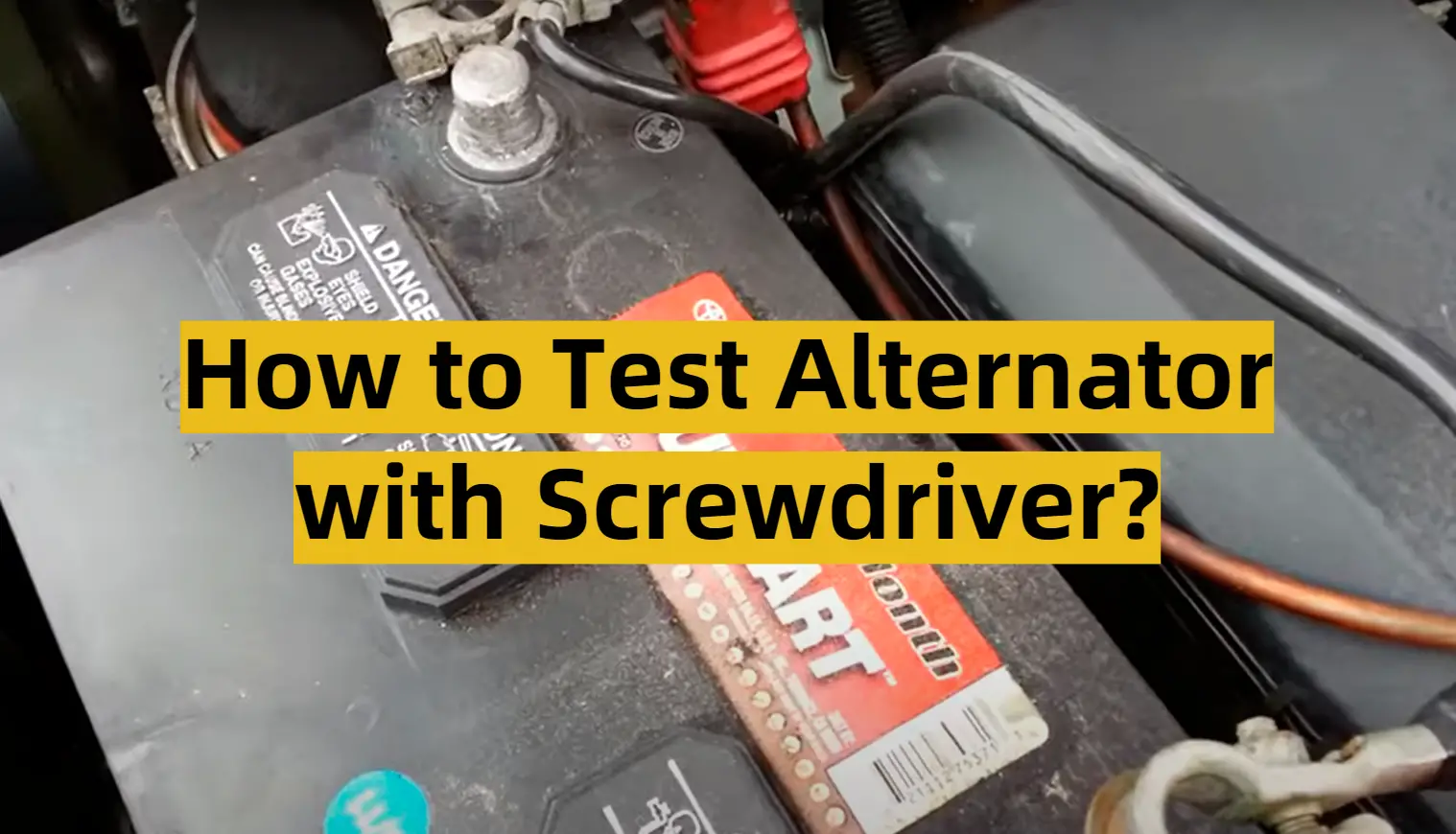








Leave a Reply